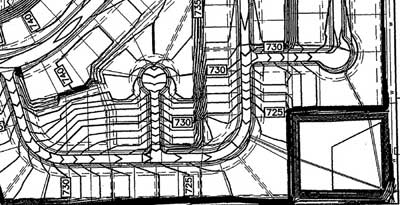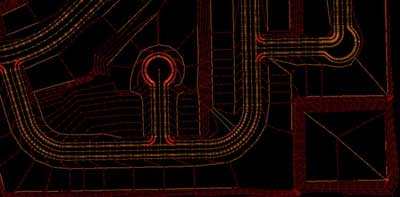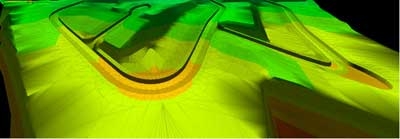How Does 3D Machine Control Work?
Exploring the process of turning complex 3-dimensional engineering designs into real-time machine control information.
Published: February 2018
Author: Position Partners
Intro
Many prospective 3D machine control system buyers quickly grasp the concept that a GPS/GNSS (Global Navigation Satellite System) antenna or LPS (Local Positioning System) prism mounted on the blade of a motor grader allows the position of the cutting edge of the blade to be known in real time.
However, how the computer in the machine cab knows where grade is and how it gets that information deserves an explanation.
What does a 3D machine control system do?
What does a 3D machine control system do?
A 3D machine control system essentially bypasses the traditional process of grade staking.
Instead of giving site plans to the surveyor, who uses these plans to manually set the stakes and then having the machine operator visually read those stakes, a 3D grade control system puts the site plans on a screen directly in front of the machine operator.
An on-board computer in the machine’s cab has a digital copy of the site plans stored in its memory and a machine receiver combined with various on-board sensors tell the computer the position of the cutting edge of the blade.
The computer then makes a determination of how far the cutting edge is from grade and sends a signal to the hydraulics to drive the blade to grade. This comparison is done several times per second, creating a real-time 3D grade control system.
Preparing the site plans for the on-machine computer
Preparing the site plans for the on-machine computer
In order for the 3D machine control system to have useful information to work with, the site plans first must be prepared in a format that the on-machine computer can understand.
A site model, or DTM (Digital Terrain Model), needs to be created either from 2D printed paper plans or from the engineer’s CAD (Computer Aided Design) file.
When starting with 2D printed paper plans (Fig 1), information on the 2D printed paper plans will have to be manually transferred to a computer.

Figure 1.
Co-ordinates, along with templates and alignments must then be turned into digitised linework (Fig 2). There are several software packages on the market that can do this.

Figure 2.
Transforming site plans into a DTM
Once in the computer, this linework can be further transformed into a DTM through a process often referred to as TIN-ing. TIN stands for Triangular Irregular Network and is the description of a mathematical method of creating surfaces from a set of points.
Lines are drawn between three close points to create a surface between them. This process is then repeated using adjacent points until the whole site plan has been turned into a 3D surface, comprised in turn of tiny, triangular surfaces (Fig 3).

Figure 3.
In some projects, the engineer can make a CAD file of the site available allowing a DTM to be generated more easily.
However, it is important to remember that the engineer’s CAD file shouldn’t be loaded directly into the computer as it will need to be stripped down to only the relevant grade information.
Formatting the DTM
Manufacturers of 3D machine control systems often use proprietary formats (types of DTMs) in their on-machine computers. This is because DTMs created for purposes other than grade control often are large and difficult to use in a real-time application.
In order for the system to run well, the on-machine computer will often require a specific format and will often differ from those of other manufacturers.
This is normally not an issue, as most manufacturers supply conversion software with their 3D grade control system, which will convert an industry-standard DTM to the specific format required in their on-machine computer. If conversion software is not supplied, this is something that can be purchased separately.
Additionally, these software packages also contain a data model viewer that is very helpful in controlling the quality of the data you put into your 3D machine control system.
A viewer allows you to look at the completed model from all angles, spin it around and zoom in and out. If there is an error in the data, it is usually easy to spot as it will show up as a ‘wild’ grade break.
Preparing data models and the training required
While a machine operator can learn the basics of a 3D machine control system in about a day, learning how to prepare the data models can take a bit longer.
If you are preparing your data models in-house, it is advised that you give the task to someone with CAD experience. The trick in learning how to make a good data model is knowing which pieces of information the machine wants.
When considering the purchase of a 3D machine control system, be sure to ask your supplier about the data preparation.
Your supplier should be able to give you a good understanding of the data flow as it relates to that particular system and let you know which options are available for training on how to prepare the data models.
The data is a very important part of your 3D machine control system. It need not be difficult, but it helps to be educated about the process so you can better implement the technology in your company.
Credit Source
Article courtesy of Position Partners Machine Control e-News.
Return to Articles

